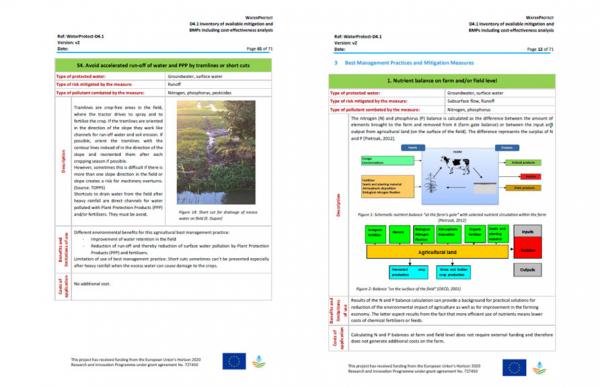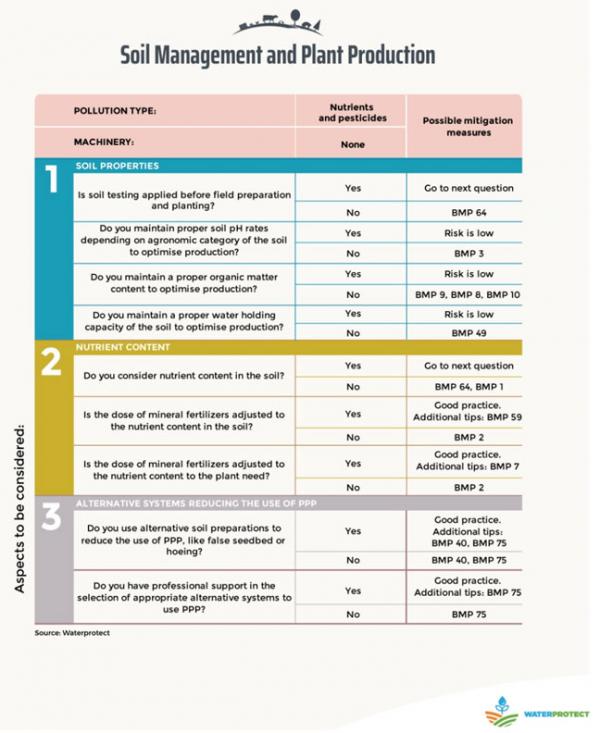Programmes with measures and best management practices to minimise the impact resulting from agricultural practices to water resources and as such to protect the environment have been developed as part of the policy to meet the requirements of the Nitrates Directive (1991). Despite these efforts, water monitoring data show that agriculture still extensively contributes to water quality problems across Europe. Anna Kuczyńska (PIG-PIB) is the leader of this work package and gives us an update about the done work and the planning for the coming project time.
Research and implementation
“WaterProtect focuses on the problem why agricultural industry and especially farmers are so reluctant to implement measures and best management practices and are also trying to convince farmers to apply the best management practices at their farm a that this can be also beneficial for the farmers themselves.
Our work packages is scheduled as follows:
- gathering and summarising in a systematic way an extensive knowledge about existing agricultural management practices (literature review based on previous research projects such as TOPPS, Magpie, Baltic Compass);
- analysing the actual situation in our seven action labs in terms of which practices are used, favoured or disliked and reasons for that, so that driving factors for further up-take can be identified;
- analysing legal frameworks in action labs to see which approaches e.g. obligatory or voluntary are most successful in implementation of measures and what are actual factors inhibiting up-take of best management practices;
- developing recommendations for all action labs by action lab leaders in cooperation with local stakeholders which types of best management practices could be most effective, taking into account possible localisations, physical conditions of a catchment and cost of implementation.
During the first 18 months of the project we have prepared a total of 4 deliverables:
- an inventory of available mitigation and BMPs including cost-effectiveness analysis.
This public report includes synthetic fact sheets about 56 BMPs , which gather most important information about selected best management practices. For the moment the team developed fitches for 56 BMPs; however due to the fact that during further works of the project additional 25 BMPs appropriate for the project have been identified, the report will be complemented with them in due course.
- An inventory of applied mitigation measures and BMPs in pilot case study areas and assessment of the potential for the uptake of new.
The report analyses actual state of implementation of BMPs in action labs. The report is based on questionnaires distributed among farmers residing in action labs and allows to understand the present attitude to BMPs implementation, reasons why they or they are not being implemented at the action lab level.
- A series of practice abstracts of selected BMPs in EIPAgri database.
These are short BMPs descriptions provided in a format provided by DG Agri. Each action lab have selected 3 BMPs most valuable from their perspective and prepared descriptions of them in a national language in a given format. All BMPs included in this have also descriptions in English.
- The development of strategies to realise the improved take up of mitigation measures and BMPs.
This public report has been so far submitted in a draft form, as work is still ongoing. In the first part of work the team has developed decision support trees/tables that allow choosing best management practices depending on agricultural pressures and physical conditions of a catchment. Methodology was developed for the following agricultural activities:
- Animal production
- Manure management
- Soil management & plant production
- Point source pollution
- Run-off &erosion source pollution
- Drift source pollution
Defining the strategy for mitigation measures
Decision support tables directing towards appropriate BMPs have been developed for further exploitation by the project partners. The partners can then decide upon the strategies to enhance water quality in the catchment of each action lab. The development of these strategies will be continued by action lab leaders in all action labs participating in the project and reported in the final version of the report.
Next steps
In the near future we will focus on the finalisation of recommendations for measures to be implemented in each action lab. We will also undertake a thorough analysis of the legal aspects in all action labs to identify drivers that either help or hamper the successful implementation of best management practices in European countries.”



